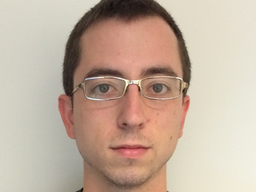PhD Proposal: Jaron Kropp
Location
Physics : 401
Date & Time
March 31, 2017, 11:00 am – 1:00 pm
Description
ADVISOR: Dr. Theodosia Gougousi
TITLE: MoS2 Surface Functionalization Studies to Enable Atomic Layer Deposition
ABSTRACT: In the past decade, atomic layer deposition (ALD) has become an important tool in the nanoelectronics industry. Used to deposit metal oxides for gate dielectrics in MOSFET devices, ALD has allowed for the fabrication of smaller and thinner silicon-based transistors. In recent years, interest has turned towards transition metal dichalcogenides (TMDs) such as MoS2 for use as channel materials in ultrathin transistors. TMDs are layered structures with a hexagonal structure similar to graphene. In single-layer form, they possess a direct band gap. As such, they are suitable for use in MOSFET devices.
ALD of metal oxides on semiconductor materials is a critical step in the fabrication of modern field-effect transistors. However, the surface of MoS2 is inert with a dearth of dangling bonds, and therefore is not conducive to the ALD process. In order to grow high-quality conformal films, the surface must first be seeded with appropriate species. In this work, I propose several methods to functionalize the MoS2 surface to enable ALD of metal oxides. I will investigate the effects of wet chemistry treatments on the surface chemistry of MoS2. I will also investigate the deposition of low-temperature seed layers on untreated MoS2. I will study the morphology of ALD-grown films on both functionalized and pristine surfaces. I will also utilize in situ Fourier transform infrared spectroscopy to investigate surface reactions and mechanisms during the ALD process on pristine and functionalized MoS2 surfaces.
TITLE: MoS2 Surface Functionalization Studies to Enable Atomic Layer Deposition
ABSTRACT: In the past decade, atomic layer deposition (ALD) has become an important tool in the nanoelectronics industry. Used to deposit metal oxides for gate dielectrics in MOSFET devices, ALD has allowed for the fabrication of smaller and thinner silicon-based transistors. In recent years, interest has turned towards transition metal dichalcogenides (TMDs) such as MoS2 for use as channel materials in ultrathin transistors. TMDs are layered structures with a hexagonal structure similar to graphene. In single-layer form, they possess a direct band gap. As such, they are suitable for use in MOSFET devices.
ALD of metal oxides on semiconductor materials is a critical step in the fabrication of modern field-effect transistors. However, the surface of MoS2 is inert with a dearth of dangling bonds, and therefore is not conducive to the ALD process. In order to grow high-quality conformal films, the surface must first be seeded with appropriate species. In this work, I propose several methods to functionalize the MoS2 surface to enable ALD of metal oxides. I will investigate the effects of wet chemistry treatments on the surface chemistry of MoS2. I will also investigate the deposition of low-temperature seed layers on untreated MoS2. I will study the morphology of ALD-grown films on both functionalized and pristine surfaces. I will also utilize in situ Fourier transform infrared spectroscopy to investigate surface reactions and mechanisms during the ALD process on pristine and functionalized MoS2 surfaces.
